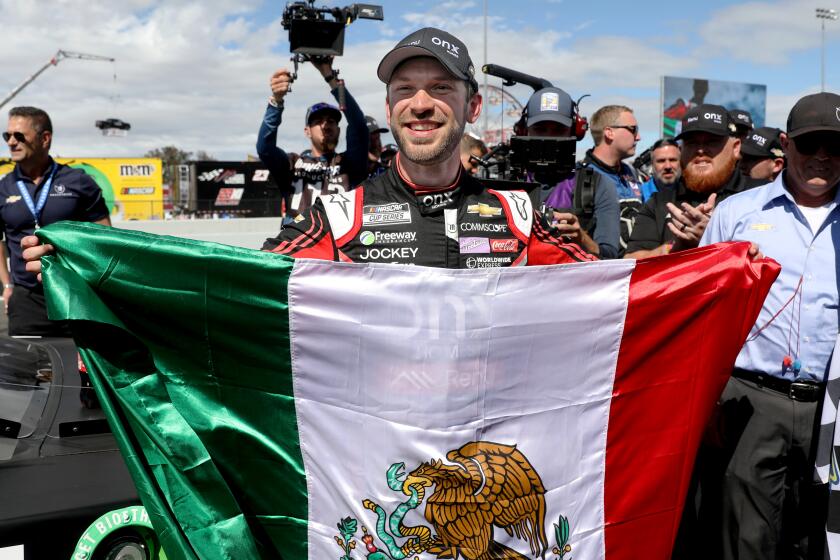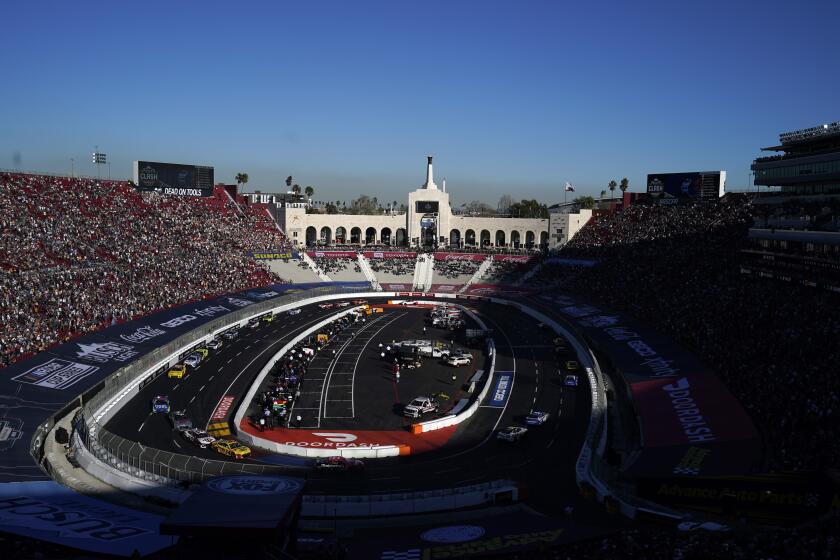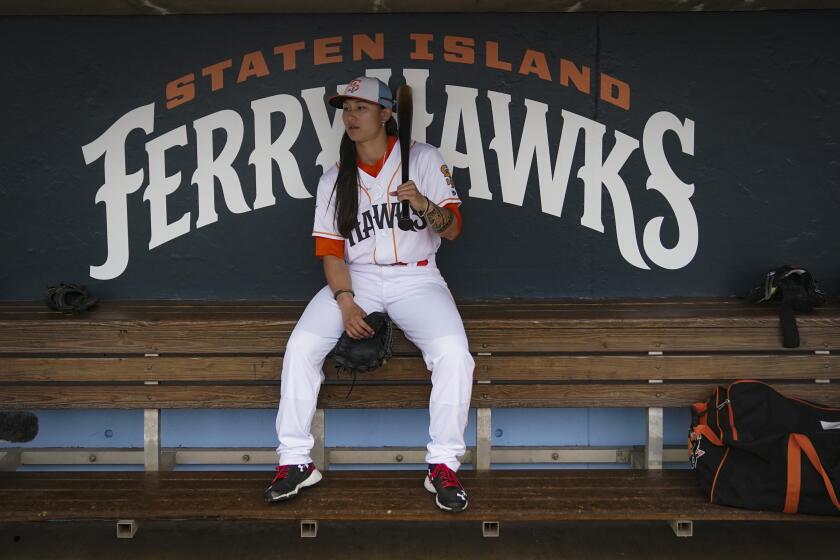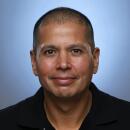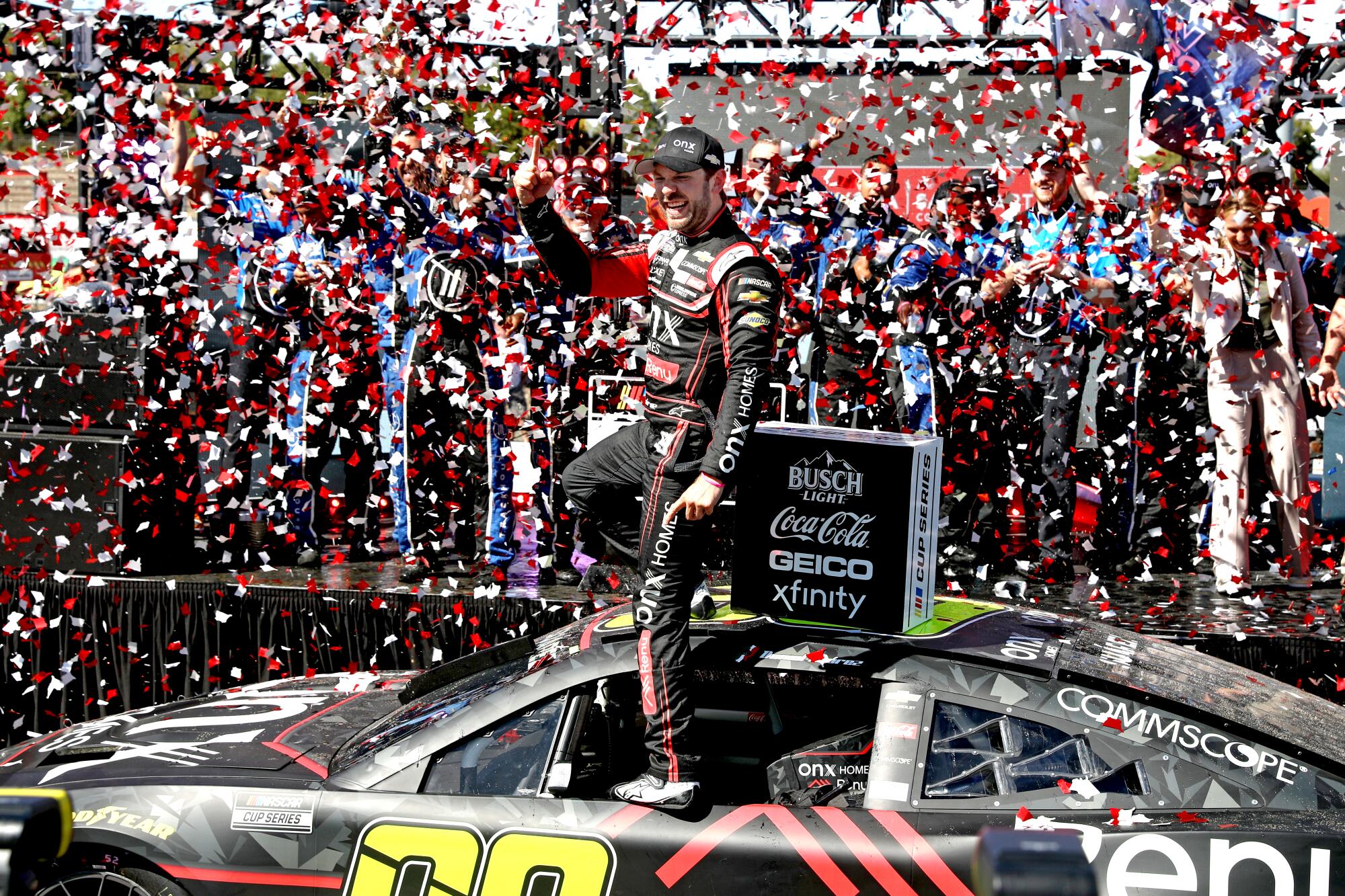
SONOMA, Calif. — For Daniel Suárez, driving was never the problem. From the first time he sat behind the wheel of a go-kart as a 10-year-old in Mexico, it was clear he could get a car around a racetrack better than just about anyone.
Yet to cash in on that talent in stock-car racing he would have to go to the U.S. He would have to go to NASCAR. And that’s where the cartoons came in.
“I was scared I would not be able to compete because I didn’t speak English. And I didn’t have money to do classes to speak English,” he said. “So I had to learn by myself by watching cartoons.”
As a result, Bugs Bunny might have had more to do with Suárez’s historic victory at Sonoma Speedway earlier this month than either Joe Gibbs or Kyle Busch, the first two team owners who hired him. Without the cartoons, Suárez said, he would have returned home to Monterrey long before becoming the first Mexican to drive on to victory lane at the end of a NASCAR Cup Series race.
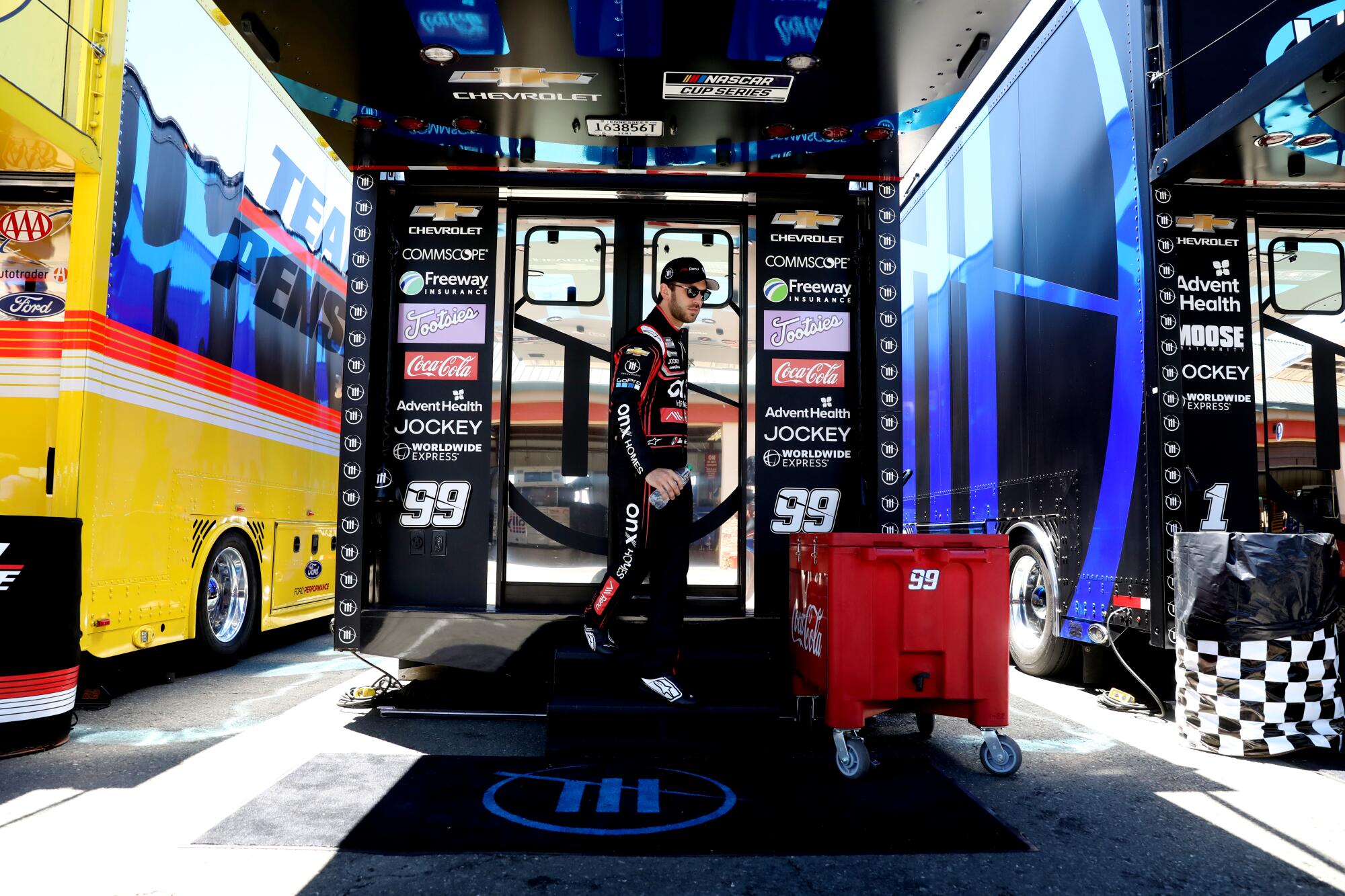
“Every NASCAR driver has had a tough journey,” he said. “But my journey is definitely the most different; leaving my family and my country and coming to a different culture, a different language.”
If that journey against long odds is one he made largely on his own, Suárez is now trying to ease the way for others — both inside and outside of racing. His efforts have the support of those at the top levels of a sport that sees diversity as a key to its future.
For most of its history, NASCAR, which traces its roots to bootleggers running moonshine, has been a largely white Southern sport, a place where Confederate flags often outnumbered American ones and where a diverse crowd was one that included fans from North and South Carolina.
Daniel Suárez became the first driver born in Mexico to win a NASCAR Cup race Sunday, claiming victory in the Toyota / Save Mart 350 at Sonoma Raceway.
NASCAR’s claim to have once had 75 million fans has always been viewed with skepticism but there’s no doubt its following has declined noticeably from whatever the high-water mark was 15 years ago. However, it might be rebounding. Although NASCAR doesn’t release attendance figures, it says crowds are up double digits over last year and Cup Series broadcasts on Fox Sports are averaging 3.7 million viewers, the best numbers since 2017.
To attract those new fans and sponsors, the sport’s executives realized they had to broaden NASCAR’s look and appeal. So while seeing Suárez celebrate his win by waving a Mexican flag along pit road might have startled some traditional fans, for NASCAR’s leaders it was a step forward.
“My story is very similar to many, many Mexicans, Latinos, coming to this country, trying to find a goal or trying to find the dream,” he said. “If I was able to make it happen, everyone out there can make it happen.”
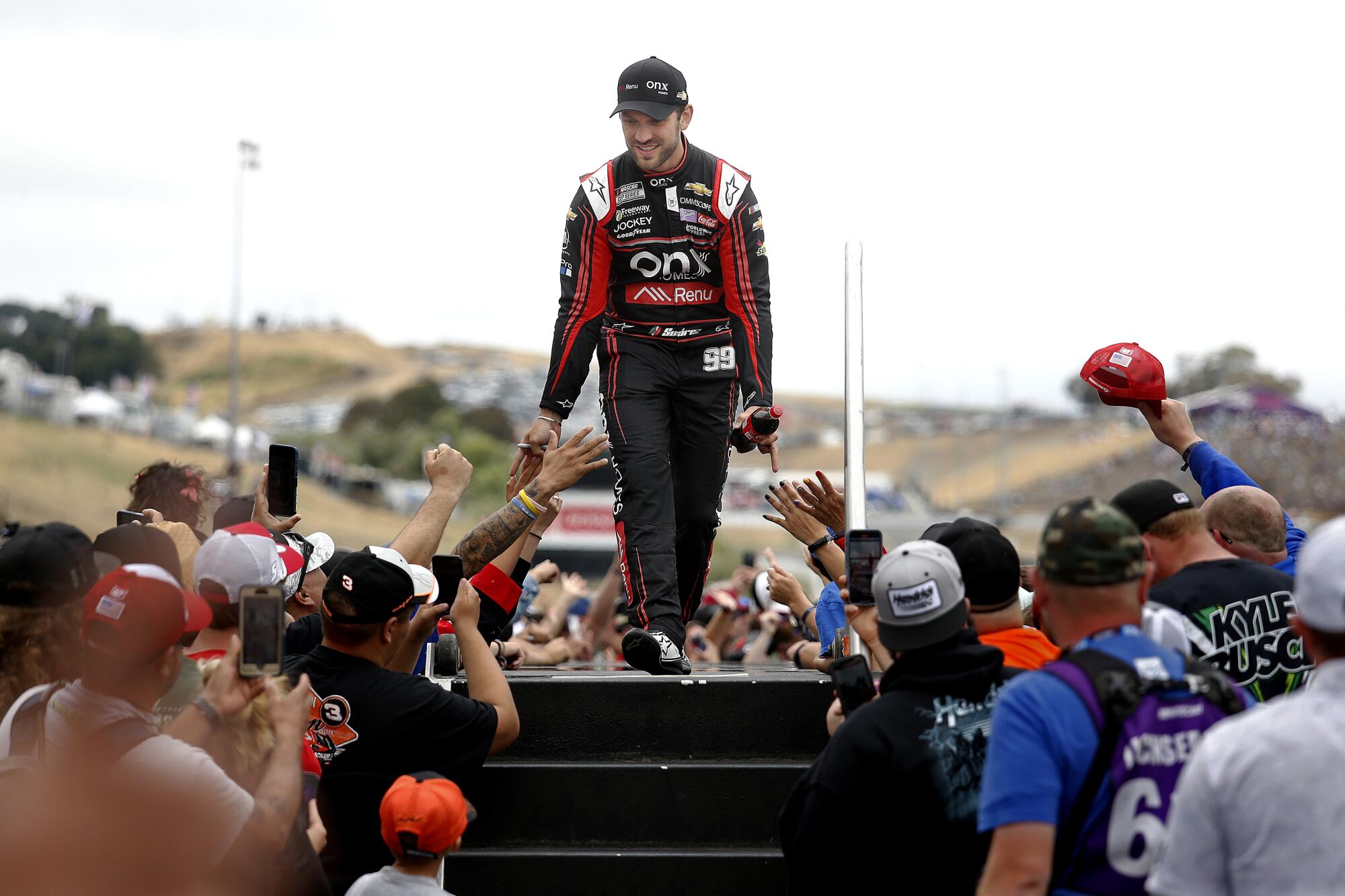
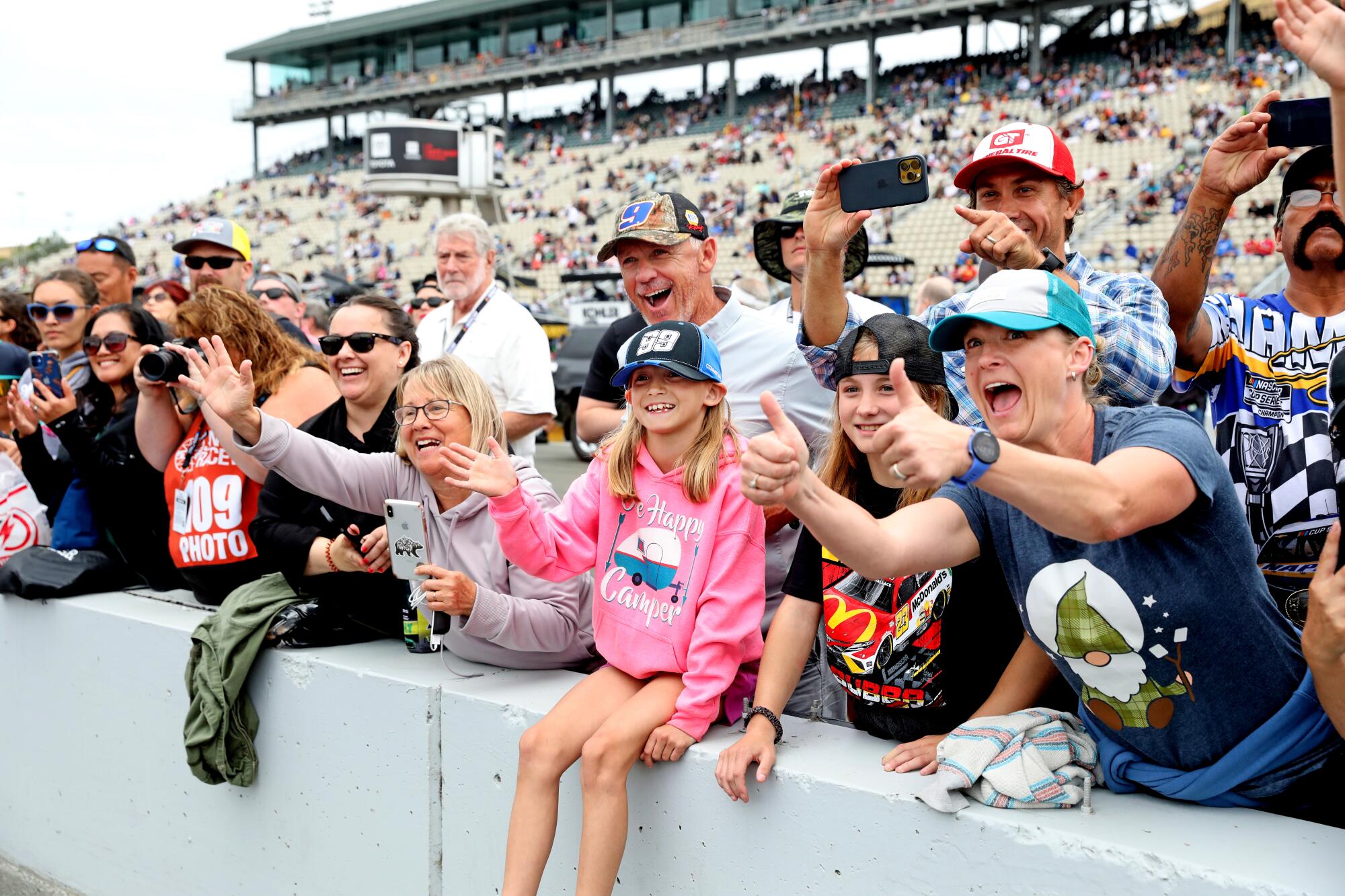
It’s a message Suárez, who wears his heart on his sleeve and his country’s flag on his race car, delivers as often as possible to as many people and he can get to listen.
“Daniel is just truly one of one,” said Justin Marks, a former driver and co-founder of Trackhouse Racing, Suárez’s current team. “He moved to America from Mexico, didn’t speak English, with a dream of being a NASCAR driver. He’s the only person that’s ever done that.
“I’ve known Daniel for a long time and he’s just a rock-star athlete. But he’s a better human being.”
At the age of 30 and with 195 Cup Series races, an Xfinity Series championship and two rookie of the year awards behind him, Suárez is hardly an overnight success. He’s well aware he didn’t accomplish any of that on his own, which is why he makes a point of thanking those who have helped him along the way.
After he showed an aptitude for driving go-karts as a boy, for example, his father sold his car-restoration business to fund his son’s dream. It’s a debt he said he can’t repay.
“My family in Mexico believed in me and never gave up on me. A lot of people did, but they didn’t,” Suárez said.

In 2007, he won the class championship and moved up to NASCAR Mexico Mini Stocks where, at 16, he became the youngest driver to win a race in the series. In 2010, while still a teenager, he joined Mexico’s top stock-car series and was named the circuit’s rookie of the year.
Over the next two years Suárez split his time between the Mexico series and a regional NASCAR circuit in the U.S., where he struggled with the language and just about everything else.
“Those were the toughest years of my life,” he said just before the start of qualifying in Sonoma, relaxing in the lounge of his team’s car hauler with girlfriend Julia Piquet, the daughter of three-time Formula One champion Nelson Piquet. “I didn’t have money and I didn’t have friends. I couldn’t even make friends if I wanted to because I couldn’t speak to them.”
In the NASCAR hub of Mooresville, N.C., he said he couldn’t rent an apartment because he didn’t have a social security number. In addition to not meeting anyone who spoke like him, Suárez didn’t see anyone who looked like him. Just one other driver from Mexico had ever run in a Cup Series race.
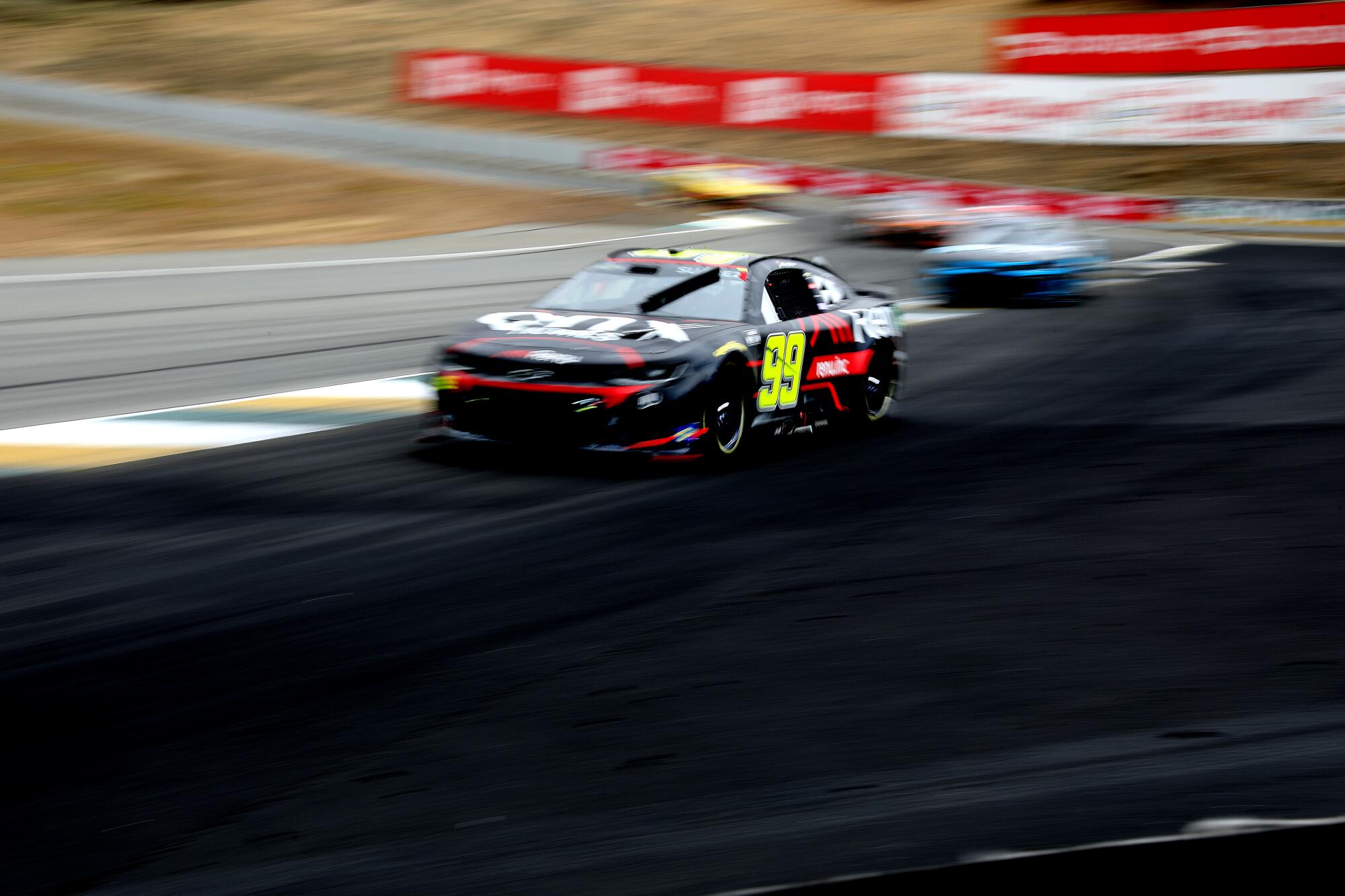
That’s something the NASCAR Drive for Diversity driver and pit crew program — and its competition arm, Rev Racing — have committed to correct by attracting and developing minorities and females for numerous positions on race teams. They were the next ones to help Suárez, stepping up at a time he was so discouraged and homesick he was about to give up and head back to Mexico.
“Without that program,” he said, “I probably wouldn’t be here.”
Mexican drivers have had success in other racing series. In May, Sergio Pérez, who has made 222 Formula One starts, won his third Grand Prix race in Monaco, one more than Pedro Rodríguez. Seven Mexicans have raced in the Indianapolis 500, with three winning rookie of the year honors. Yet until Suárez no Mexican had broken through in that most American of series, stock car racing.
“Diversity for any business is important. Especially as you look toward the future,” said Jusan Hamilton, 31, NASCAR’s senior director for racing operations and event management, who this year became the first Black race director for the Daytona 500. “If you’re going to grow in today’s world, having not just diversity in terms of the way people look, but also diversity in terms of opinions, diversity in terms of background and experiences” is important.
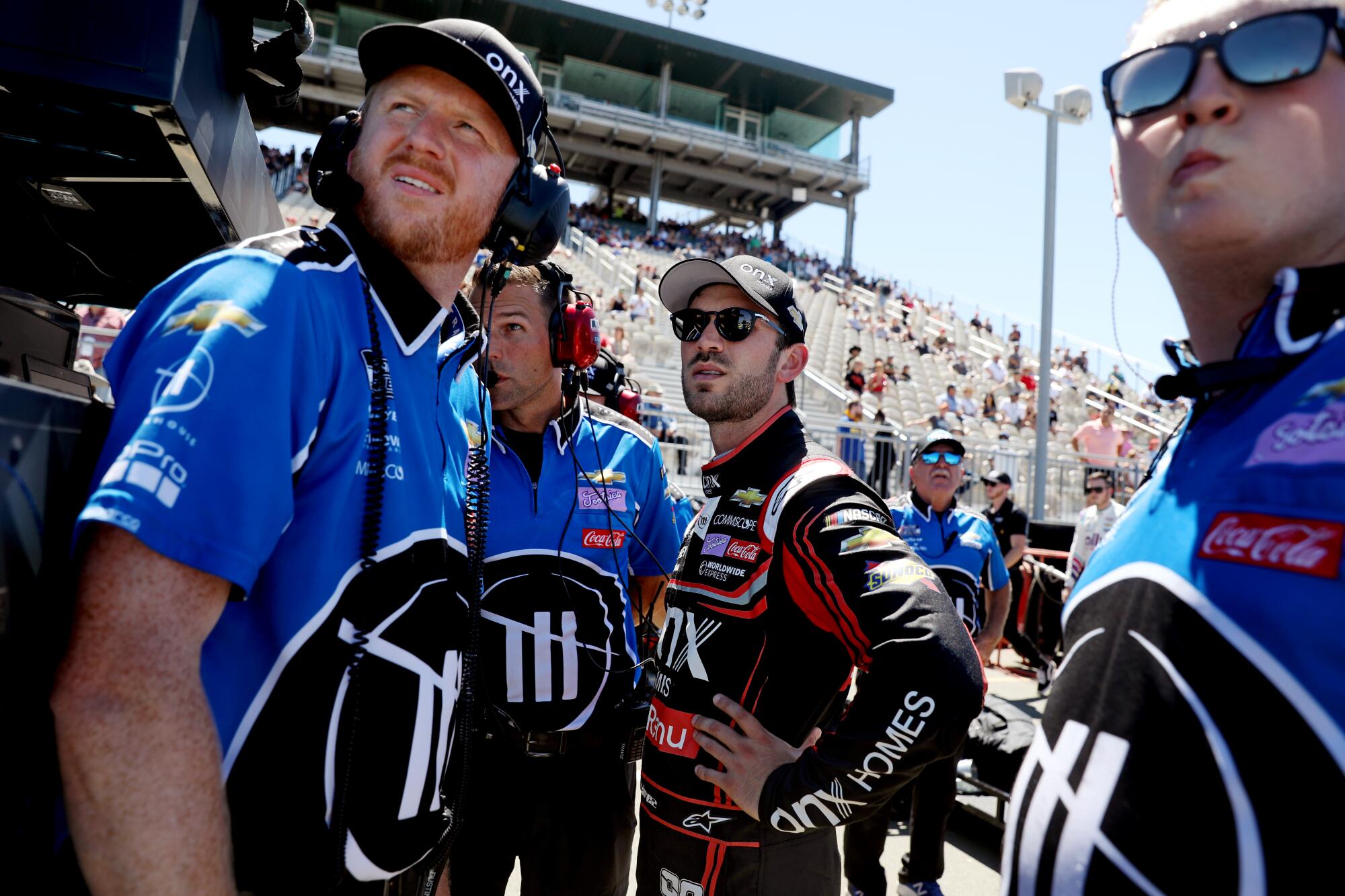
That’s a big change from 2011, when Suárez arrived.
“There was not that path,” he said.
Since he forged one himself, Drive for Diversity graduates have included not only Suárez, the only Mexican to win a season points championship and a Cup race; but Bubba Wallace, the only current full-time Black driver in the NASCAR Cup Series; Kyle Larson, last year’s Cup Series champion who is of Japanese-American heritage; and Hailie Deegan, who has raced 35 times in the NASCAR truck series over the last three seasons.
“Representation matters,” said Max Siegel, the owner of Rev Racing and manager of NASCAR’s Drive for Diversity program. “You can tell people all the time that you can be everything you want to be but unless they see people [like them] doing it, unless you can show them a pathway to success, it’s kind of hard to get that excited and engaged.”
That’s one reason Drive for Diversity graduates are marketed heavily by NASCAR. Yet their most important attribute isn’t who they are or how they look, Siegel emphasized, but how they drive.
“We’re developing our drivers to be excellent at racing because if they don’t, if they’re not winners, if they’re not successful on the track, the marketing stuff is secondary,” he said.
After a very successful first event, NASCAR is bringing back the season opener to a special quarter-mile track inside the L.A. Memorial Coliseum.
That’s not to say the marketing is irrelevant, which is why Regina Sirvent is a driver some NASCAR executives are watching closely. A bright, bubbly 18-year-old with an engaging personality and a wide smile, Sirvent, who races in both the Mexico Series and with the Drive for Diversity in the U.S., is appealing not only because she’s female and Mexican, but also because she has nearly 400,000 social media followers.
So not only can she drive, she can attract people to watch her drive.
“We’re not going to be where we really need to be as a sport until you have an industry and a driver pool that mirrors the U.S. population,” said Chad Seigler, NASCAR’s vice president of international business. “The home run for me one day is going to be when I watch the beginning of the Daytona 500 and in addition to having multiple females race, we look at it and say ‘here’s drivers from Mexico and here’s drivers from Canada and Europe.’ So that’s been the biggest push.
“And then when you look at Mexico specifically, the Hispanic fan base, it’s such a key target for NASCAR.”
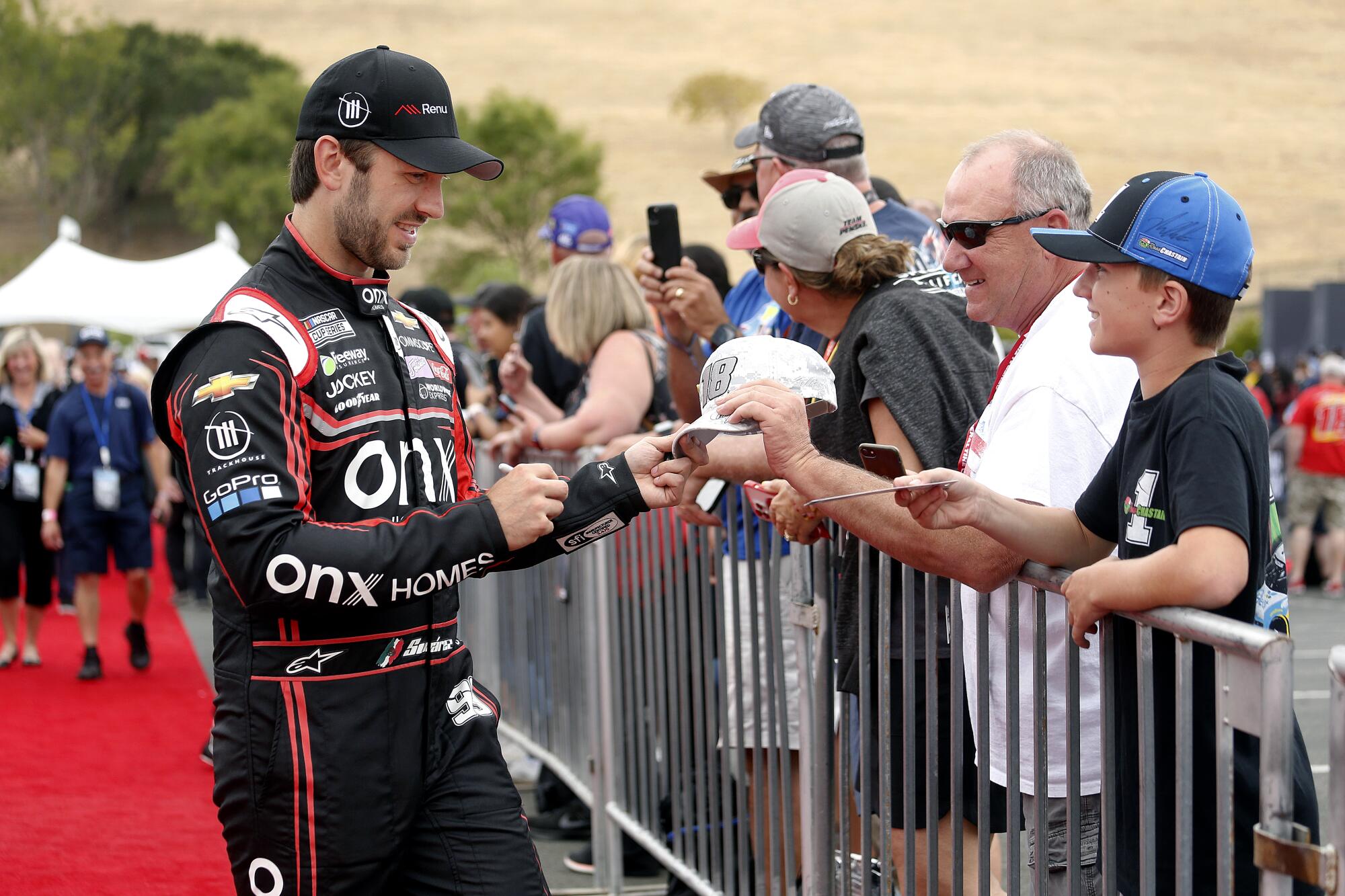
A native of Mexico City and the granddaughter of a race car driver, Sirvent started in go-karts when she was 9, then began climbing the ladder much as Suárez did. Unlike Suárez, she came to the U.S. three years ago with a firm command of English and a clear path to follow.
“Danny Suárez is like a role model to me. I feel like I’m following his steps. That motivates me a lot,” she said. “If you’re capable it doesn’t matter your gender, it doesn’t matter your nationality or your color.
“If you’re consistent and you work hard you will be able to reach your dreams, I think Danny is proof of that.”
More women are playing baseball at higher levels than ever before, but they still face challenges earning Major League Baseball roster spots.
Suárez looks like central casting’s version of a race car driver at a cockpit-friendly 5-foot-9 and 166 pounds, with intense brown eyes and an angular face covered in scruffy stubble. Yet he has had to prove himself over and over.
In 2015, his first full season in a national touring series, he won three pole positions and rookie of the year honors in the Xfinity Series and a year later won he won the Xfinity Series championship, becoming the first foreign-born driver to win a NASCAR national series title.
In 2017, he moved full-time to Joe Gibbs Racing’s Cup team when Carl Edwards retired, but two years later JGR cut him loose and Suárez spent 2019 with the Stewart-Haas team. Despite 11 top-10 finishes, that relationship lasted only 36 races and in 2020 he joined Gaunt Brothers Racing, a low-budget team, where his career stalled: He failed to make the field for the Daytona 500 and best finish that year was 18th, one of just three races in which he reached the top 20.
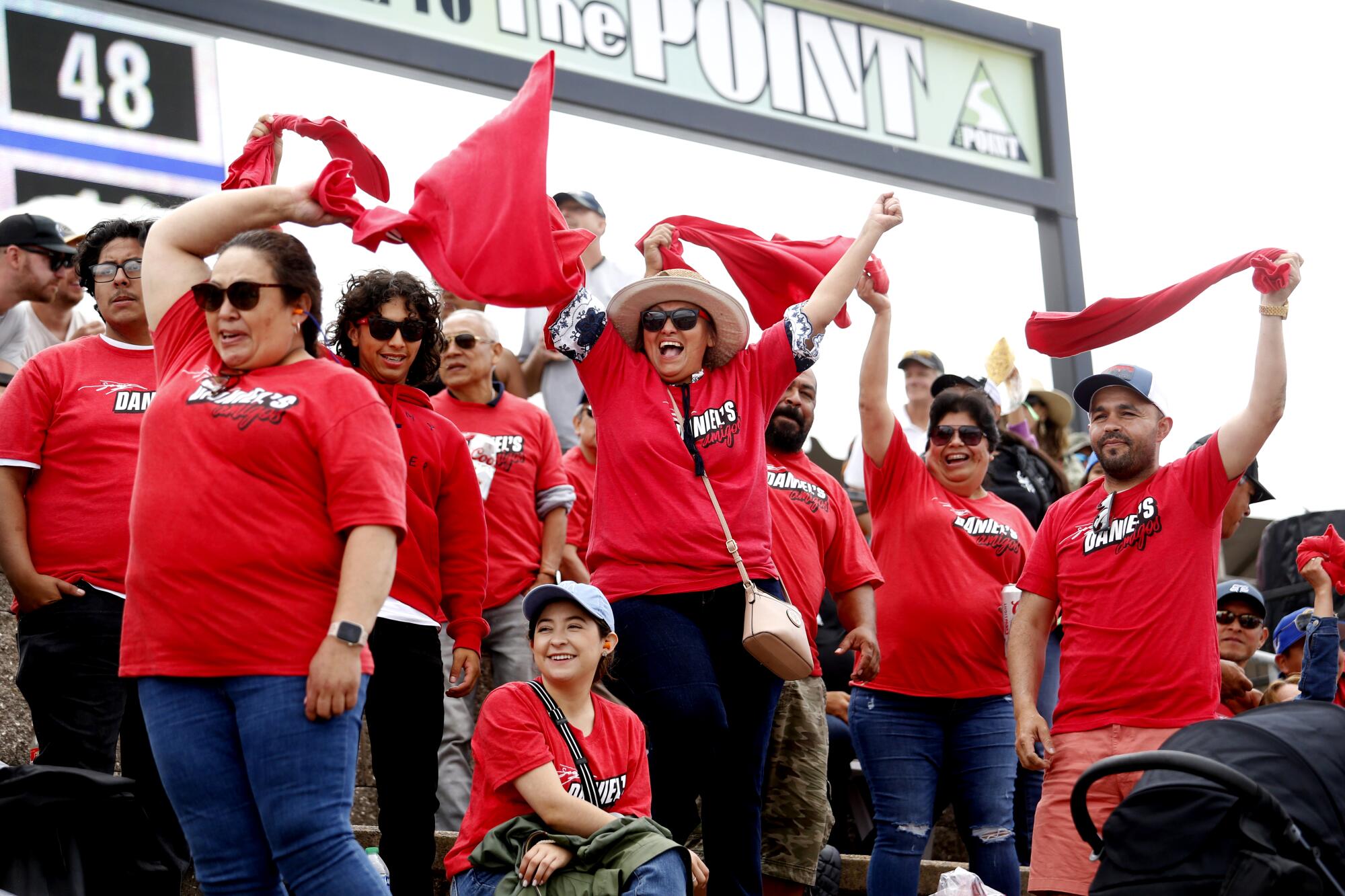
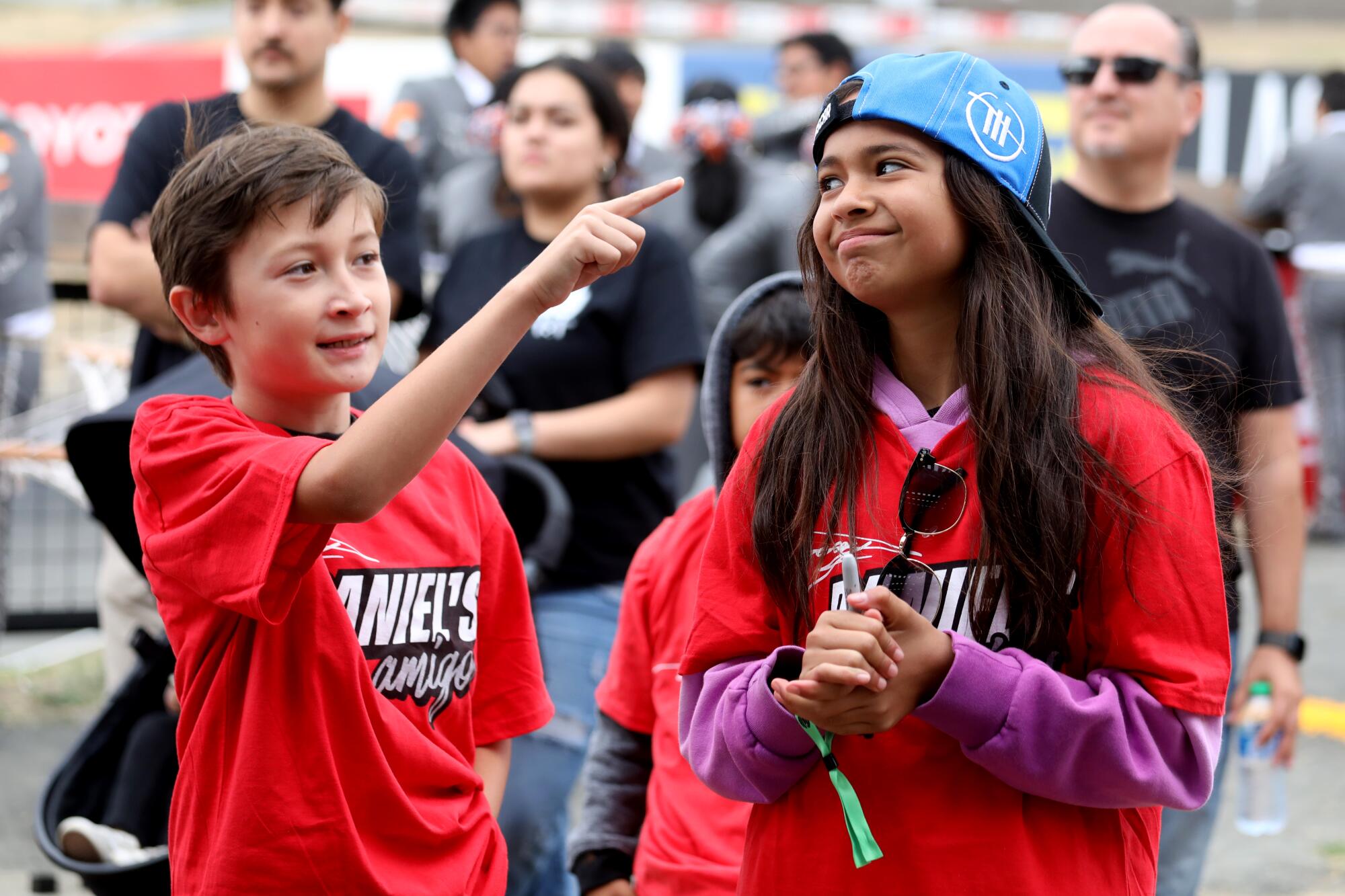
Before the season was over, he announced he would be changing teams for the third time in as many years by signing with Trackhouse Racing, part of fledging sports and entertainment group founded by Marks and later backed by Grammy-winner rapper Pitbull.
For Trackhouse, Suárez was the perfect driver.
“When we started this team, it was very, very important to make the right decision who was going to help build this company from inside the race car,” Marks said. “We had a couple of boxes we needed to check. We needed somebody that was experienced, which Daniel was. We needed somebody that was hungry, which Daniel was. We needed somebody that had a chip on their shoulder and we ready to show the world that they could be successful.
“But the last box that we had to check was we wanted somebody that was a great story because we’re in the business of building a brand and a business.”
Suárez isn’t shy about sharing his story of perseverance and success. Before the Sonoma race, he spent 90 minutes visiting with more than 350 people under a large white tent perched on a hill above the first turn of the 1.99-mile road course. Over three seasons the “Daniel’s Amigos” program Suárez founded has introduced thousands of people, mostly Hispanic, to NASCAR.
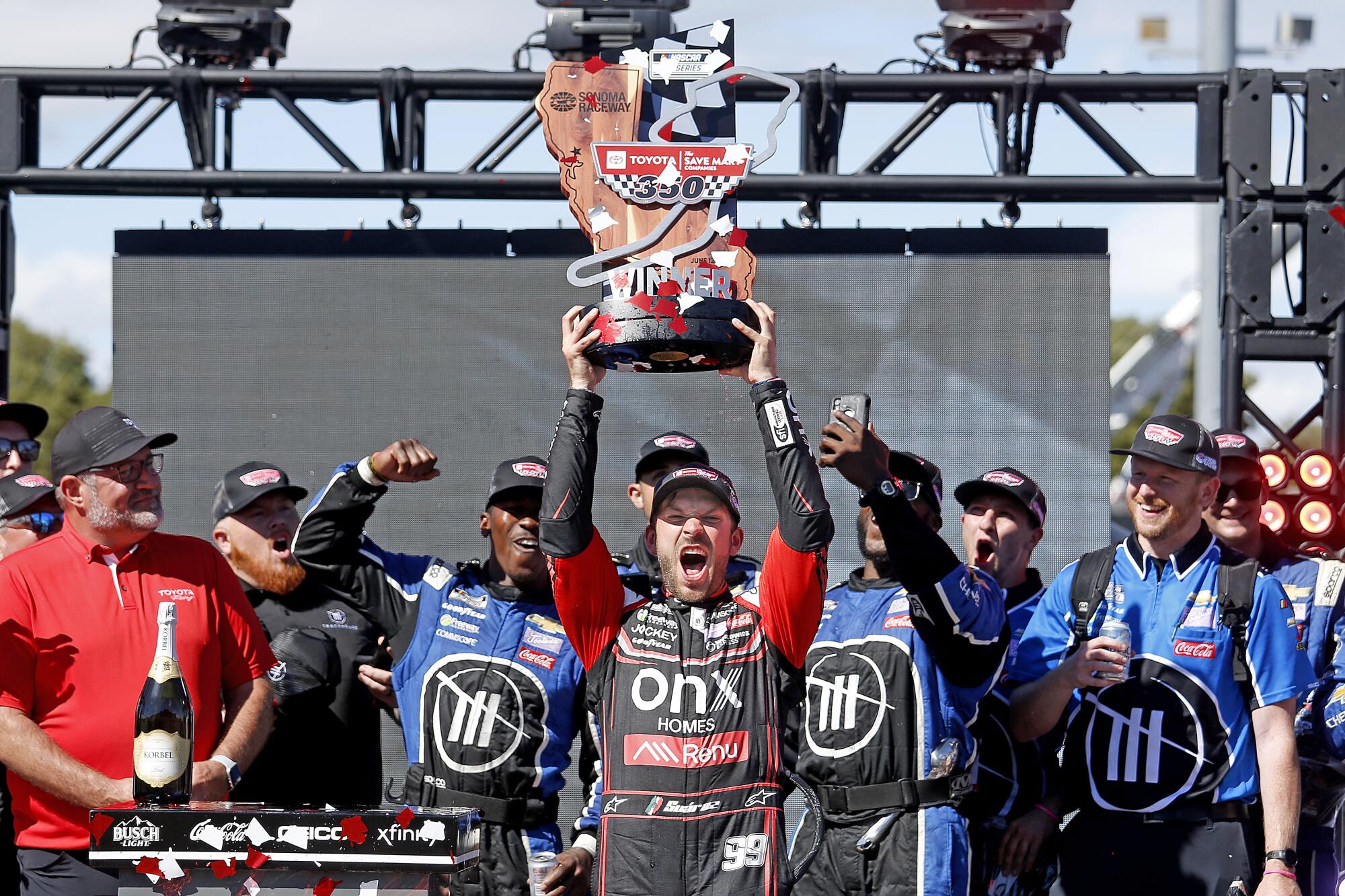
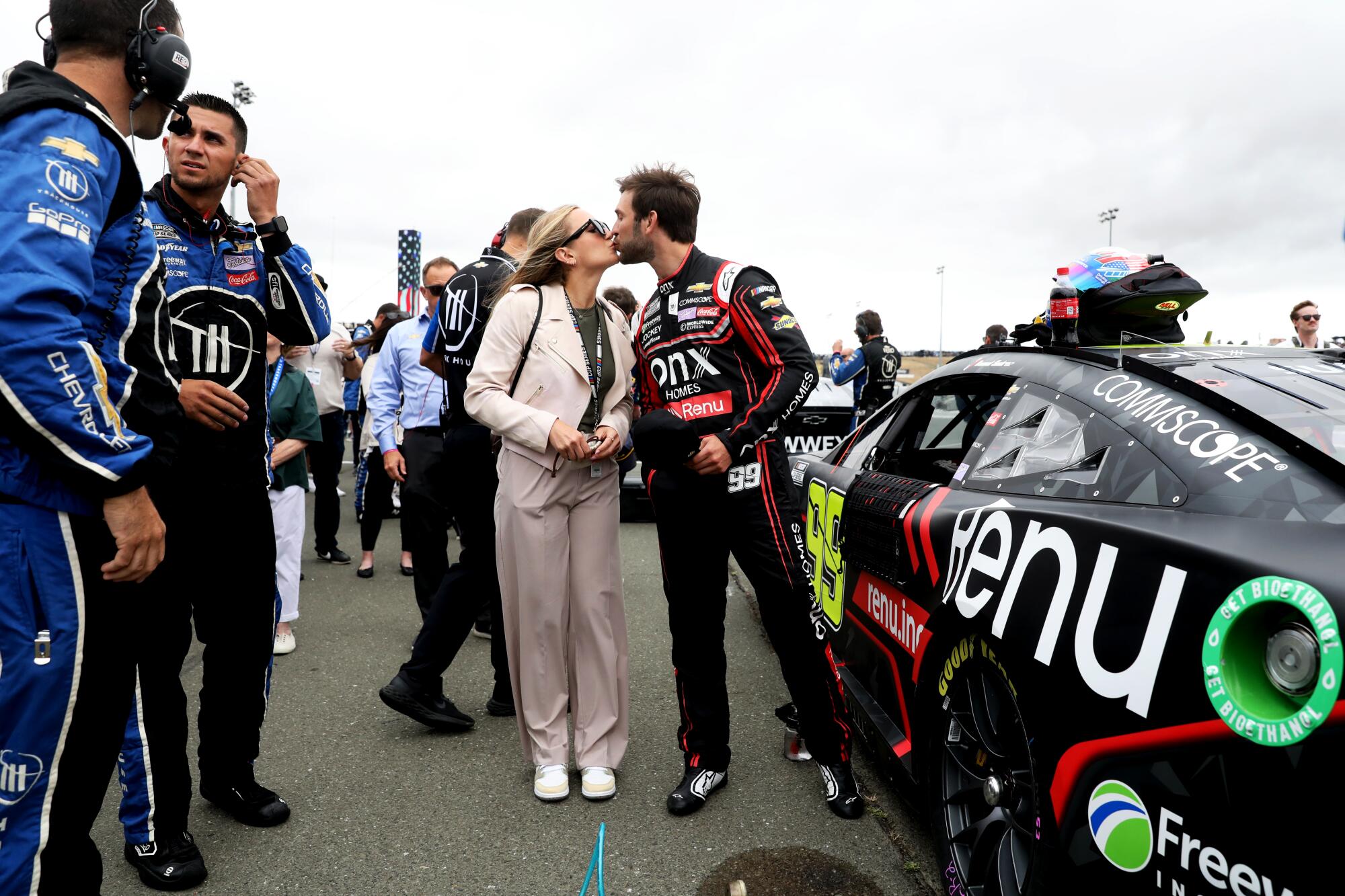
“It has been inspirational to see that,” said Trackhouse Racing president Ty Norris. “When we’ve walked into ‘Daniel’s Amigos’ and he’s speaking Spanish and everyone’s laughing and having a great time, these people are embracing the sport because they feel welcome. Daniel is one of one that can do that.
“What we have discovered through Daniel is the passionate fan base that lives outside the traditional NASCAR fan base. We’re tapping into a culture.”
Or better yet, they’re tapping into a culture that always existed but was hidden from NASCAR in plain sight. Suárez, who opened a path for Mexican drivers, built that bridge to Latino fans too.
“When I came to this country in 2011, I only had one goal: to win races and championships. I didn’t care about anything else,” he said in Spanish. “But I began to notice the lack of Latino, Hispanic, Mexican presence in NASCAR. It’s really important that people, that Latinos, understand that the doors are open.”
Then he broke into a smile and switched to English, the language he learned from cartoons.
“I’m just very thankful,” he said “to be a kid coming from Mexico trying to live the NASCAR dream in the U.S.”
More to Read
Go beyond the scoreboard
Get the latest on L.A.'s teams in the daily Sports Report newsletter.
You may occasionally receive promotional content from the Los Angeles Times.

